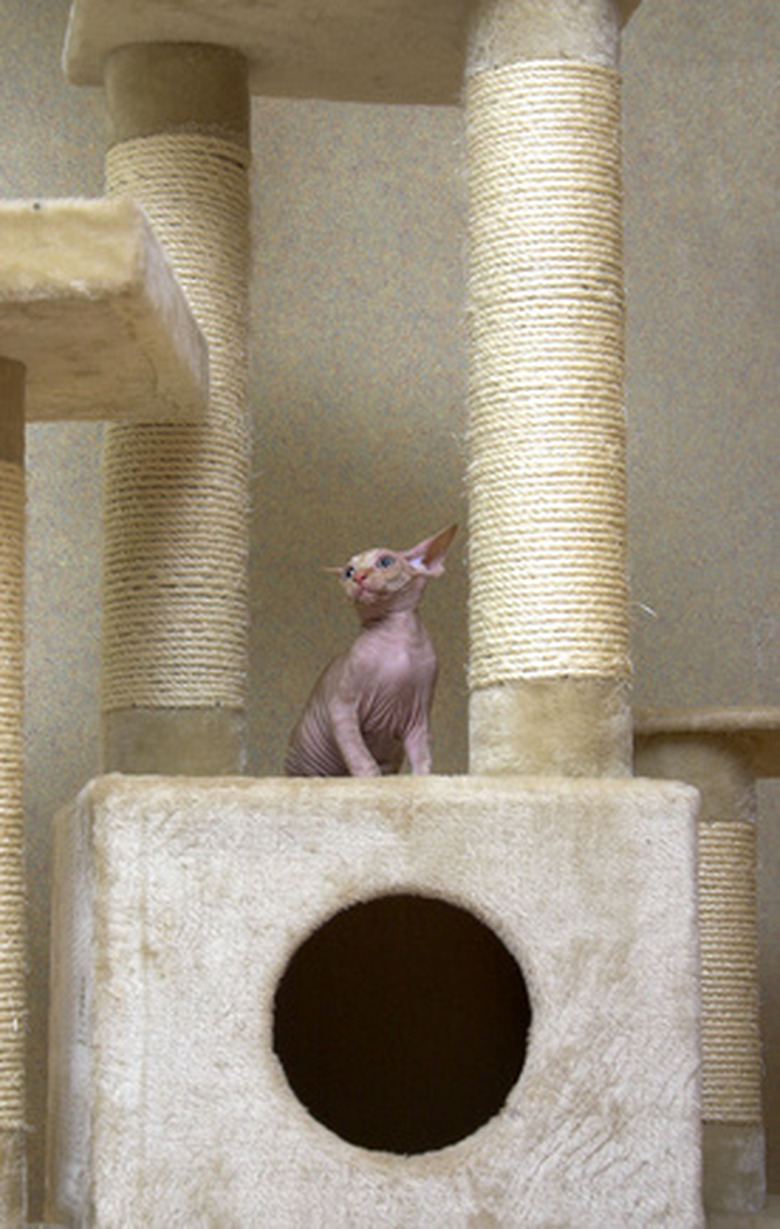How To Reupholster Cat Trees
Things Needed
-
Cat tree
-
Sharp cutting tool (box cutter, scissors, utility knife)
-
Material to cover structure (carpet, fabric, sisal rope)
-
Hammer and nails or heavy duty staple gun and staples
Every cat owner knows that providing you cat with cat furniture is a good idea. This simple act saves your carpets, furniture, window hangings, and even woodwork from the damaging effects of sharp cat claws. Cat furniture also provides your cat with hours of entertainment. So what do you do when your cat's beloved cat tree starts to fray and tear? Then it's time to reupholster, which is much simpler than you may think.
Step 1
Remove the old upholstery. Pull off what you can, unwind any rope, or cut the old upholstery off in strips using a box cutter or other sharp cutting tool. If you use a box cutter or similar, be careful not to cut too deeply or harshly as it may damage the structure of the cat tree. Take note of how each piece of material was attached to the tree, sizes of material pieces and so forth as you remove them from the structure. You may find this information helpful when you put material back onto the tree.
Step 2
Select the material you want to use to cover the structure. Carpet, fabric and sisal rope are all popular options. Carpet is durable and cats like it, but it can be tricky to work with. Fabric may tear quickly, but when you stick cotton batting beneath it on a platform, it makes a comfy place for cats to nap. Sisal rope is the easiest material to work with for this project, plus it's durable and inexpensive.
Step 3
Cut pieces of your material to fit the areas of the cat tree that need covering. Hold the material up to the areas to measure how much material you need to cut. You may find it easier to cut the material into smaller strips in order to fit oddly shaped areas of the cat tree such as scratching post or platforms. If you use sisal rope, you can skip this step entirely.
Step 4
Attach the material to the cat tree. If using fabric or carpet, secure the material to the structure using a heavy duty staple gun and staples, or a hammer and nails. (Be sure all staples or nails are pushed into the structure completely to avoid snagging or scratching your cat.) If using sisal rope, secure an end of the rope to the structure using a heavy duty stapler. Tightly wind the rope around each area of the structure, attaching the other end of the rope to the structure using another staple.
Step 5
Test the structure for safety. Ensure that all material is securely fastened to the structure, or else you run the risk of your cat tearing off all your hard work on the first try. Remember, your cat climbs on this cat tree and the material that covers it, so loose material may result in an injured cat. If the material is secure, the cat tree is ready for play time.
Tip
If the old material was secured to the tree using nails, glue, or staples, consider attaching the new material using the same method. This could make your job easier.
If using fabric or carpet to cover the structure, scraps of these materials can be purchased inexpensively from fabric and carpet stores. All of your scraps may not match, but if you don't mind some added character it could save you money.
References
- "Think Like a Cat: How to Raise a Well-Adjusted Cat Not a Sour Puss"; Pam Johnson-Bennett; 2000
- Build your own cat tree
- How to Build a Cat Tree Complete with Scratching Post and Tower
